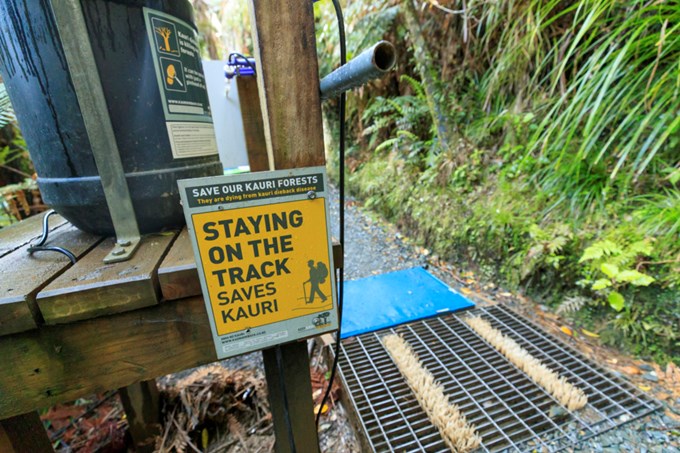Ongoing management of kauri dieback disease in the Waitākere Ranges Regional Park will be considered by the council’s Environment and Community Committee on Tuesday 5 December.
Committee chair Councillor Penny Hulse says the committee will be considering five options that range from stopping all kauri dieback management programmes in the Waitākere Ranges to closing the park.
“More than half of the substantial kauri areas in the Waitākere Ranges contain symptoms of infection. Despite ongoing research, there is no known cure for the disease.
“Our task next week is to settle upon the option that sees the best outcome for our kauri forests, balanced with the demands on one of largest and most popular recreation areas.
“The Waitākere Ranges Regional Park has a million visitors a year, and it is important that we reflect on what is a practical balance for those who use or live near the park, and the fight against kauri dieback,” she says.
The report outlines five potential options for the next steps for the management and restriction of the disease, these are:
- Option One: cease management of kauri dieback disease in the Waitākere Ranges and focus investment on non-symptomatic kauri areas.
- Option Two: Continue with the existing work programme of education, hygiene station upgrades, some track maintenance and surveillance, and progressing the proposed responses in the draft Regional Pest Management Plan and Long-term Plan.
- Option Three: Continue with the existing work programme plus undertake some further targeted closures of tracks and areas within the park over 2017/2018.
- Option Four: Close all medium and high risk tracks within the Waitākere Ranges Regional Park, with the option of progressively reopening them as the risk is reduced.
- Option Five: Close the Waitākere Ranges Regional Park.
Read the report here.
Option Three – officer recommend option
The report recommends the committee adopts Option Three which includes delivery of the existing work programme along with targeted closure of a number of tracks within the regional park. Temporary track closures are proposed for seven additional high-risk tracks and five additional tracks where closure will result in better use of hygiene stations or to protect non- symptomatic kauri areas. This option could also provide for additional temporary closures in the future.
It also includes the permanent closure and disestablishment of nine tracks which were temporarily closed in 2012 and will allow the continuation of events and concessions on non-closed tracks.
Rāhui – a cultural restriction on park land
Local mana whenua, Te Kawerau a Maki has placed a rāhui, or cultural restriction, across the park.
“While we respect the position of Te Kawerau a Maki, and agree that it sends a strong message to the community, we also recognise that it is not a tool that can control access to the park, and a long-term plan for kauri dieback management needs to be employed.
“We look forward to further collaboration with Te Kawerau a Maki after our decision is made on Tuesday,” says Councillor Hulse.
The Environment and Community Committee meeting will be webcast live on the council’s website from 9.30am on Tuesday 5 December and items are available to watch on demand after the meeting.
What we’re currently doing

A new walk-through phytosanitary station has been installed at Piha and will be fully operational before the peak of the summer visitor season. Twenty-three additional stations will be installed (in the ranges and across the region) during December and installation will coincide with track works in some locations.
Track surfaces are being upgraded within the park as part of an ongoing track improvement programme to reduce the risk of kauri dieback spreading. This equates to spreading 125 tonnes of metal (gravel) on six high risk tracks.
Increased public information is planned for car parks and high use locations at regional parks around the region and larger signs will be put in place to tell visitors that they are entering kauri dieback or healthy zones.
Kauri dieback ambassadors will be stationed at locations across the Waitākere Ranges and Hunua Ranges regional parks, Auckland’s wharfs, Shakespear and Tāwharanui regional parks and on Waiheke from 16 December to the end of February.
This year we are also completing survey reports across the northern part of the region, and looking into a trial of phosphite treatment (to halt progress of the disease in the tree) in the Waitākere Ranges early next year.

